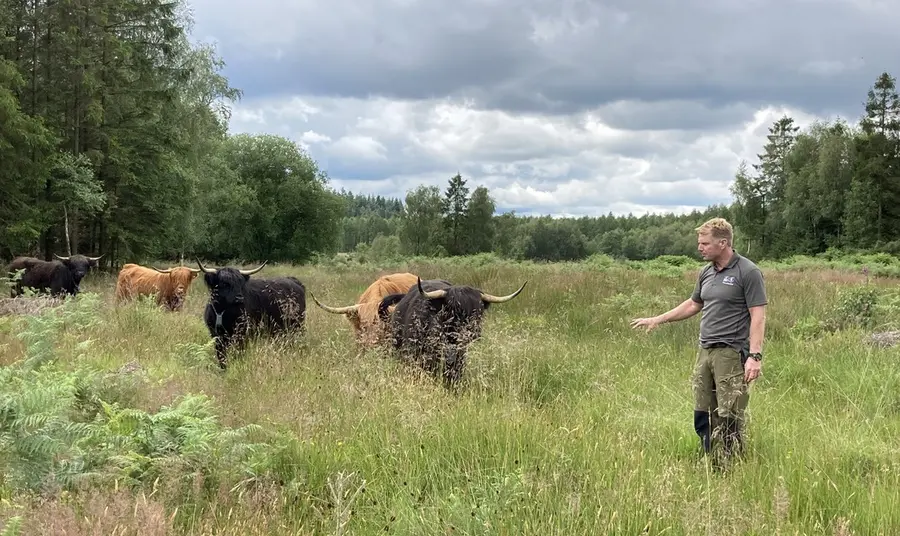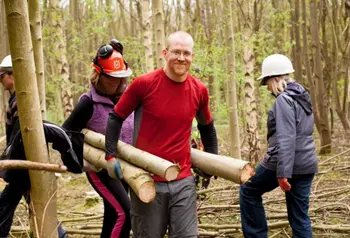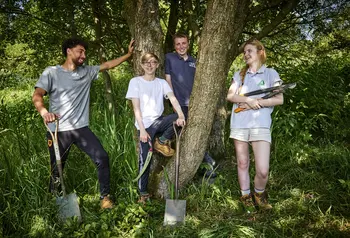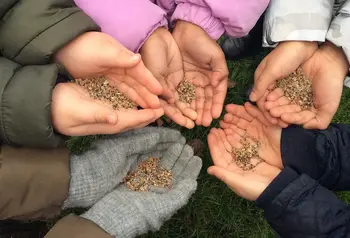
Landscape Partnerships
The programme
The Forest of Dean is nationally important with unique and irreplaceable heritage. It has changed many times over the centuries – from a source of timber for Tudor ships to a major site of industry in Victorian times. Today, it is a great place to explore and a stronghold for nature with diverse habitats and wildlife.
This far-reaching and complex programme comprised 38 projects across five themes that uncovered, shared and celebrated natural, built and cultural heritage:
- Stronghold for Nature: 11 projects to safeguard the forest for the future, developing habitats and surveying both flora and fauna species. Volunteers learned new skills and will continue to maintain and monitor the sites.
- Exploring our Forest: six projects to improve access to the forest's heritage - physically and digitally. ‘Trampers’ (all-terrain mobility vehicles) were introduced for visitors and four apps developed to help people explore the forest above and below ground (Hidden Heritage apps and Geoheritage app).
- Revealing our Past: seven projects that explored specific parts of the forest's history, including through archaeological digs, learning heritage skills, conservation works on buildings, oral history recording and dialect cataloguing.
- Celebrating our Forest: eight projects celebrating the forest's culture. Participants delivered community events and created resources on subjects including local literature, brass bands, support for those living with dementia and foraging edible resources.
- Securing our Future: six projects found ways to encourage the next generation to explore what makes the Forest of Dean so special, reaching hundreds of children and young adults in schools and through outdoor activities and learning sessions.
Community engagement was key to the success of the programme, and bringing multiple projects together helped achieve an even greater impact. For example, the Community Wildlife Study Group trained volunteers who then worked on a range of biodiversity issues within the Stronghold for Nature theme.
Highlights of the programme are showcased in a series of celebratory films.
The organisation
Forestry England was the lead partner for Foresters’ Forest, employing the programme delivery team and providing financial support and expert advice and guidance. Forest Voluntary Action Forum were the key partner helping projects recruit and manage the hundreds of volunteers involved in projects, delivered by 32 partner organisations.
The funding
The Foresters’ Forest programme received a £2.5million grant through The National Lottery Heritage Fund's Landscape Partnership Scheme in April 2017.
The funding was needed to help raise awareness of, and participation in, the natural, built and cultural heritage of the Forest of Dean. It enabled projects to:
- develop activities and resources for both local residents and visitors
- protect and enhance habitats for species at risk
- conserve structures in danger of collapse
- celebrate our music and literature
- record knowledge that might be forgotten
- teach the next generation how to care for the forest in future
We want to continue to enthuse our younger generation so that they carry our passion for our forest – the Foresters’ Forest – into the future to safeguard a unique, irreplaceable land.
Sue Middleton, Project Manager at Forestry England
The results
The programme’s legacy is vast:
- Lydbrook Primary School re-wrote their entire school curriculum to experience and learn about the forest’s heritage
- hundreds of activities were delivered by local community groups and programme partners
- a wealth of resources and information is now available online for future generations, including a social history archive of 200 oral histories spanning the 20th century
- over 1,000 local volunteers learned valuable skills and contributed over 37,000 hours to the programme
- community projects have developed and will continue to thrive
- Creation of three new habitats as part of Gloucestershire Wildlife Trust's Conservation Grazing Project. The open habitat is maintained by the grazing Highland Cattle and benefits a large range of species such as birds, reptiles and butterflies.
An extract from the programme evaluation report reads: "There were high levels of outcome attainment in the majority of projects, but this only partially describes the impact of the programme on the Forest of Dean.
"More significant for local communities are the wider impacts and benefits arising from the seven years of programme development and delivery. These can be summarised in these six themes: consensus and recognition, heritage condition, information resources, inclusiveness, community engagement, and building capacity and resilience."
The future
Twenty six of the 38 projects will continue beyond the formal end of the Foresters’ Forest programme, as will the community engagement.
A new organisation, Our Forest, is evolving to support the Foresters’ Forest legacy and ensure that the knowledge, skills and resources created continue to be useful. One element of it is the work with the West Gloucestershire Schools Partnership to promote learning in schools.
Sue Middleton, Project Manager at Forestry England said: "We want to continue to enthuse our younger generation so that they carry our passion for our forest – the Foresters’ Forest – into the future to safeguard a unique, irreplaceable land."
Opportunities for volunteers include surveying species, creating habitats for wildlife and recording oral histories. Contact the Forest Voluntary Action Forum for more information.
Top tips
Forestry England offered the following tips for other organisations interested in running a similar project:
- It is important to have clear project objectives that dovetail with the funder’s aims.
- Volunteers are essential to the successful delivery of so many projects and are very valuable so should be encouraged, supported, celebrated and thanked.
- Project administration takes longer than people expect, so sufficient time needs to be allocated to this element.
- Enjoy the journey, discovering the hidden heritage of your area and celebrate it.


